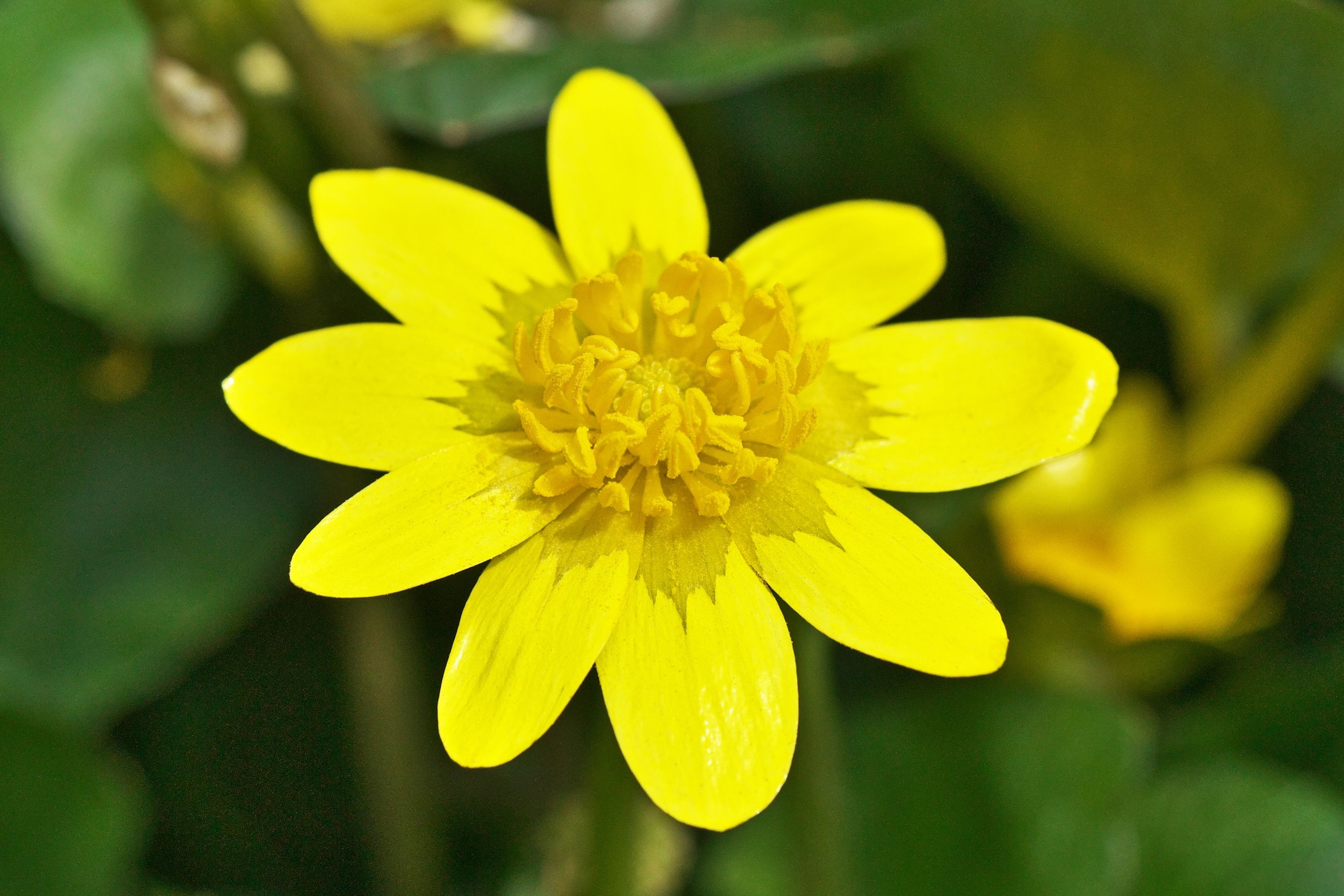Lesser celandine
(Ficaria verna)

Description
Ficaria verna, commonly known as lesser celandine, is a species of flowering plant in the buttercup family, Ranunculaceae. It is a perennial herb that grows low to the ground and produces bright yellow flowers in the spring. Ficaria verna is native to Europe and western Asia but has been introduced to North America, where it is considered an invasive species. Description and Identification: Ficaria verna is a low-growing perennial plant that typically grows to be 10-30 cm tall. It has a shallow rhizome system and small, rounded leaves that are about 2-3 cm wide. The leaves are dark green and shiny, with prominent veins that radiate from the center of the leaf. The plant produces bright yellow flowers that are about 2-3 cm in diameter and have eight petals. The flowers bloom in early spring, usually from March to May, and are a welcome sight after a long winter. One of the distinguishing features of Ficaria verna is its bulbils, which are small, rounded structures that form at the base of the plant. The bulbils are capable of developing into new plants, which makes Ficaria verna a particularly tenacious weed. Habitat and Distribution: Ficaria verna is native to Europe and western Asia, where it is found in a variety of habitats, including woodlands, meadows, and riverbanks. It is particularly common in damp, shady areas, where it can form dense mats that outcompete other plants. Ficaria verna has been introduced to North America, where it is considered an invasive species. It has been reported in a number of states, including New York, Pennsylvania, and Ohio, and is particularly problematic in the northeastern United States. Ficaria verna has also been introduced to other parts of the world, including Australia and New Zealand. Ecological Impact: Ficaria verna can have a significant ecological impact in areas where it is invasive. Its ability to form dense mats and outcompete other plants can reduce biodiversity and alter ecosystem function. The plant can also have a negative impact on wildlife, as it can displace native plants that provide food and habitat for animals. Control and Management: There are a number of strategies for controlling Ficaria verna, but the most effective approach will depend on the specific circumstances of the infestation. Some of the most common control methods include: Manual removal: Small infestations can be removed by hand, being careful to remove all of the bulbils to prevent regrowth. Chemical control: Herbicides can be effective at controlling Ficaria verna, but care must be taken to avoid damaging other plants in the area. Cultural control: Altering the habitat to make it less favorable for Ficaria verna can be an effective long-term control strategy. This might include improving drainage or planting other plants that can outcompete Ficaria verna. Biological control: Some natural enemies of Ficaria verna have been identified, including fungal pathogens and insects. However, the use of biological control agents must be carefully considered to avoid unintended consequences. Uses: Despite its invasive nature, Ficaria verna has been used for a variety of medicinal purposes in traditional European medicine. The plant has been used to treat a range of ailments, including digestive disorders, headaches, and skin irritations. However, the use of Ficaria verna for medicinal purposes should be approached with caution, as the plant can be toxic in high doses. Conclusion: Ficaria verna, also known as lesser celandine, is a low-growing perennial plant that produces bright yellow flowers in the spring. While native to Europe and western Asia, it has been introduced to North America.
Taxonomic tree:







